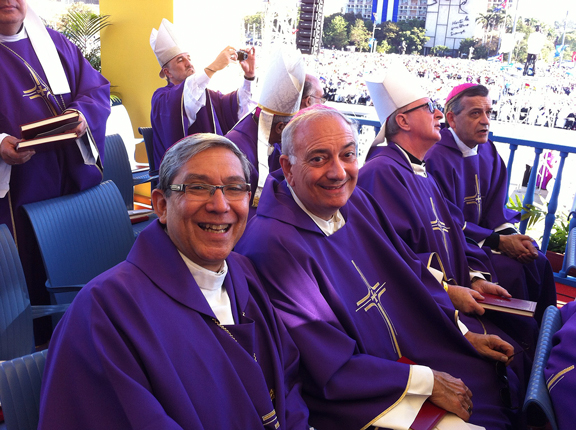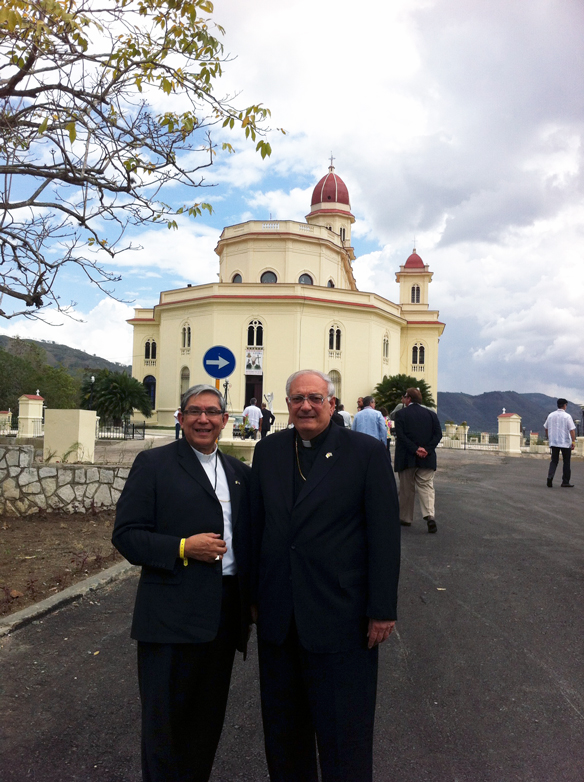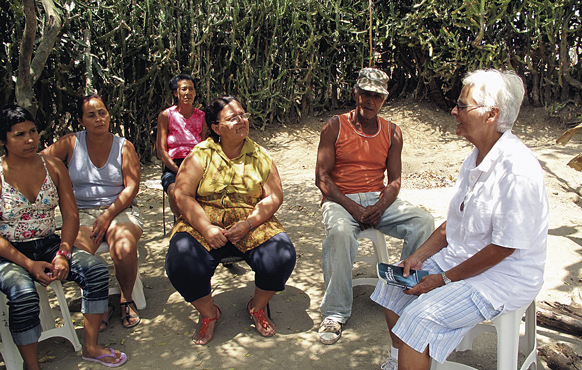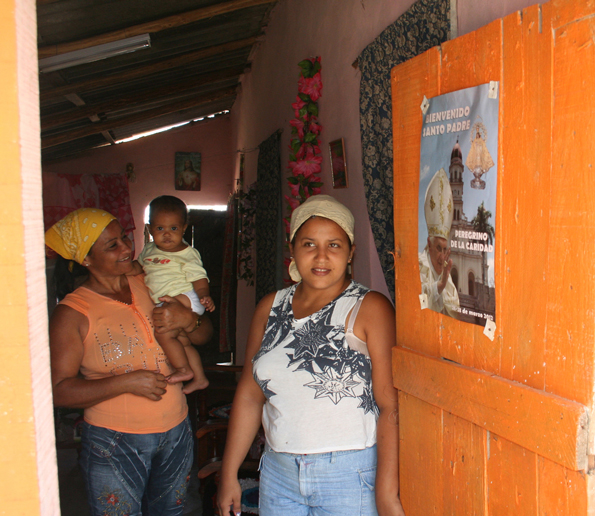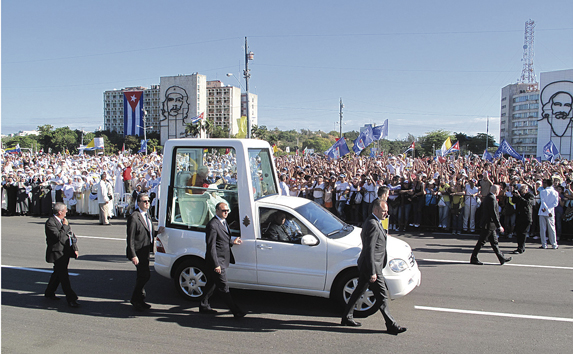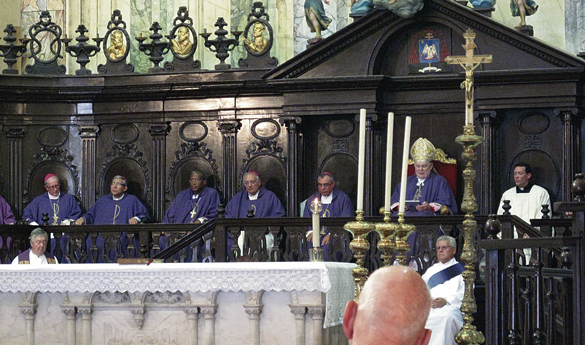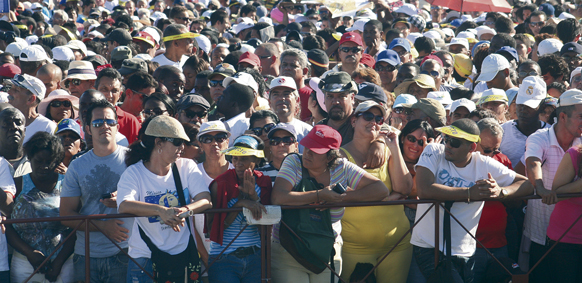by Antonina Zielinska
After nearly two months of phone calls, paperwork, and tests of resilience, Msgr. Kieran Harrington, diocesan vicar for communications; Will Fonseca, producer and cameraman for NET-TV; and I, landed in Cuba as journalists to cover the pastoral visit of Pope Benedict XVI on March 23.
Despite hours and hours of preparation we landed with only one confirmed interview and assurances that we had hotel reservations. We had no idea what anything would cost – not even the hotel rooms we reserved — or how to function in a society that had just recently changed its atheist mandate.
We were not the only ones with a high sense of confusion. When we landed, Cuban officials did not really know what to do with three Catholic journalists, one of whom was a priest. Will was interrogated for three hours because the authorities did not like the fact that he had a wireless microphone. It was not a pleasant welcome, even though the people were very courteous.
My week in Cuba interacting with the locals, led me to the conclusion that the Cuban people are a people of love and charity, living under difficult circumstances. After a tough day of travel and dealing with officials we met our first driver, who was contacted only the day prior. Since we landed in Holguin, he had to drive us to our hotel in Santiago de Cuba, a city he was not familiar with.
Santiago turned out to be a maze of broken roads on hills. The driver was lost. So he asked person after person where to go. Most tried to be as helpful as they could be. Finally, one man showed us the true meaning of Cuban charity. He walked over to a motorcyclist, got on his bike, and led the way for us for about 10 minutes. This man, who had never met us before, did not want us to wander the city in darkness and went out of his way to help us.
The very next morning, we visited the Shrine Church of Our Lady of Charity, the patroness of Cuba and the center of the pastoral visit of the Holy Father. Here, I understood the previous night’s events in a whole new light.
Though we saw very few posted advertisements, during our visit in Cuba, the entire country was decorated with posters declaring “La Caridad Nos Une,” which means “Charity Unites Us.” These were referencing the patroness and, in the way I saw it, the spirit of the people.
We were able to speak with the rector of the sanctuary, Father Jorge Enrique Palma Arrué, and Sister Martha Leé, H.S., who work in the Church of Our Lady of Charity. They both told us of the great devotion of the people to the Lady of Charity. Father Palma saw this as a great opportunity to evangelize. He said Cubans of all walks of life come to visit, even those who do not realize that the Virgin Mother of God and the Lady of Charity are one in the same.
Sister Martha said all Cubans, young and old, men and women, come to visit. And when Cubans travel abroad among the first things they do is come back to the Lady and offer gifts of thanks for a safe return. Soldiers, athletes, those who were healed and those who are still sick, and others who feel a strong connection to the patroness leave their medals, honors, and other objects at the shrine.
“The Virgin of Charity has always been a bright ray, a star through which God illuminates the people of Cuba,” Sister Martha said.
Sister Martha was able to get me on the phone with Sister Nora Valdivia Velazquez, H.S., who runs three missions on the outskirts of Santiago, one of which is in the village of Refugio.
In Refugio, I was able to see a glimpse of the spirit of the people. The people all lived in shacks, but everything they owned was clean and taken care of. The children all had shoes on their feet, appeared healthy and could read and write. They did not have paved roads or windows, but they did have televisions, running water and electricity, that went out only occasionally. It was obvious that all the people took great pride in the little they had.
Among their greatest wealth is community. Everyone knew each other and took care of each other. Even one of the most famous baseball players in the country lived in this community.
The parish of St. Joseph caters to communities like this in the outer reaches of the city. It has 40 mission houses but no church building and only one priest, whom the people see four to five times a year. Therefore it falls to missioners like Sister Nora to evangelize and take care of the people. She teaches them about the church and helps them help themselves by organizing classes for life skills such as sewing and embroidery. Sister Nora and the Cuban Conference of Catholic Bishops agree that the missions are the future of the Catholic Church in Cuba.
She said she is amazed at the receptiveness of the people. When she started Holy Literature classes, she said she questioned the ability of the adult students to grasp the new concepts. However, she said they were so hungry for knowledge that the classes were a big success. So far she was able to bring over 120 people into the community in the village of Refugio.
¨And who is the greatest promoter of all of this?” asked Sister Nora. “Who helps us succeed and allows us to build the future of the Cuban church? Our patroness, mother, and queen — the Virgin of Caridad. She is the great advocate who bring us closer to Jesus. She brings her Son to the people of Cuba.”
